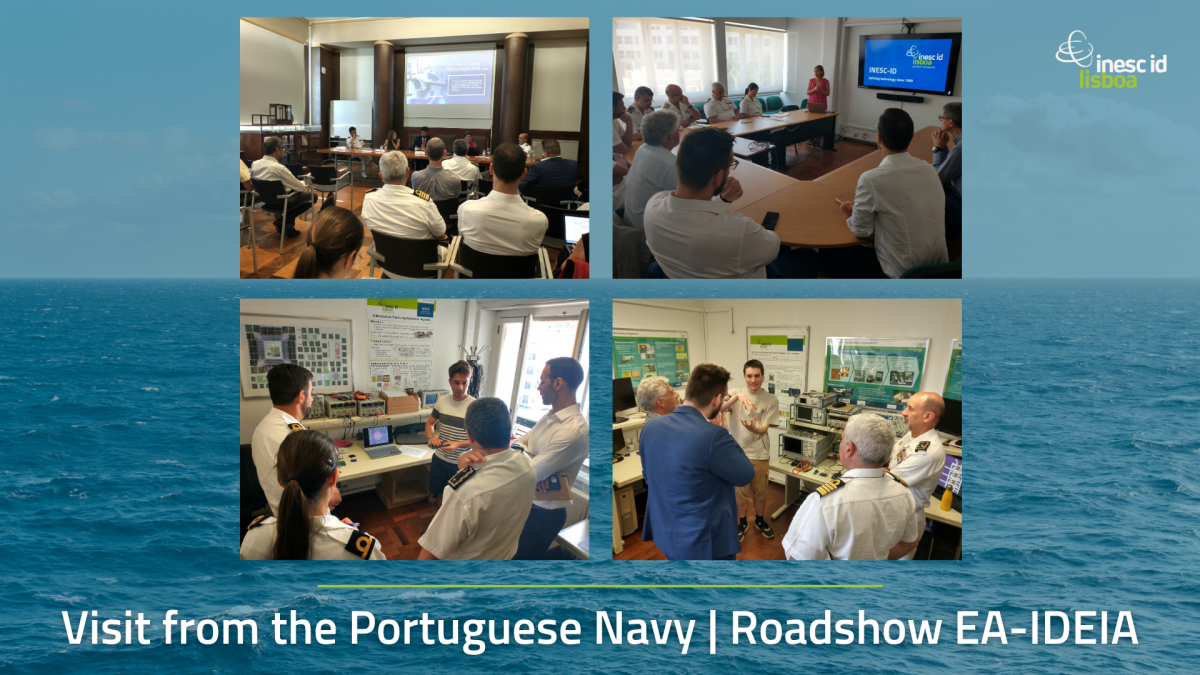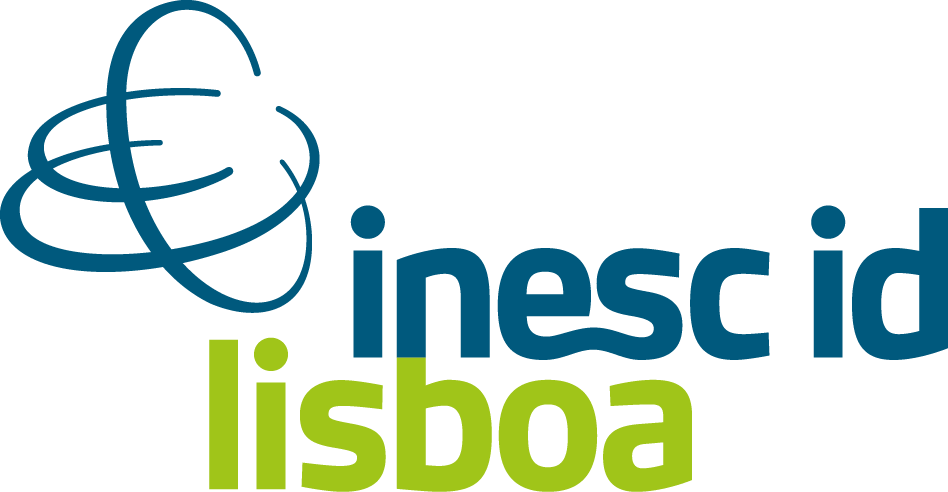
The Portuguese Navy visits INESC-ID
Instituto Superior Técnico (IST) today received a visit from representatives from the Portuguese Navy (Marinha Portuguesa, the naval branch of the Portuguese Armed Forces that is charged with the military defense of Portugal), who also had the chance to take a sneak peek at the work being developed by four research units associated with the largest engineering school in Portugal: INESC-ID, INESC MN, Instituto de Telecomunicações (IT) and Instituto de Sistemas e Robótica (ISR).
This visit was part of Roadshow EA-IDEIA (Estrutura de Acompanhamento da Investigação, Desenvolvimento, Experimentação e Inovação da Armada), an initiative that aims to promote cooperation between the Navy, academia and industry in order to find common areas for future collaboration. The 2023 edition is taking place in the Lisbon and Tagus Valley region, with the main areas of focus being robotics, signal processing and artificial intelligence — all areas of expertise of INESC-ID.
The entourage brought some of the Portuguese Navy’s biggest names to our campus; amongst them Vice-almirante Henriques Gomes (Vice-Chefe do Estado-Maior da Armada), Comodoro Domingos Vaz (Chefe da Divisão de Inovação e Transformação do Estado-Maior-General das Forças Armadas), Capitão-de-mar-e-guerra Paulo Gonçalves Simões (Chefe da Divisão de Redes e Sistemas de Informação do Estado-Maior da Armada), Capitão-de-mar-e-guerra Jorge Lourenço Gorricha (Diretor do Centro de Investigação Naval), Capitão-de-fragata João Lourenço da Piedade (Chefe da Divisão de Inovação do Estado-Maior da Armada) and Subtenente Madalena Gonçalves de Barros (Divisão de Inovação e Transformação do Estado-Maior da Armada).
After watching a presentation on IST’s inner workings, main achievements and research areas, the Navy’s representatives spoke about some of the Navy’s priority areas — which focus on diverse technologies (e.g., energy production and storage, sensors, communication), systems, and integration domains — and research interests, from facilitating access to the sea while collecting data on these large expanses, operating autonomous vehicles, or the development of sensors to detect submarines.
The Navy’s entourage then visited INESC-ID, where our President Inês Lynce highlighted the institute’s R&D+I remits and areas of expertise, many of which clearly overlap with the Navy’s R&D needs — from energy production and storage to distributed systems and cybersecurity — and visited our electronics lab, hosted by Nano-Electronic Circuits and Systems (NECS) PhD students Fabian Näf and Gonçalo Rodrigues.
Interesting collaborations might very well be on the horizon.
